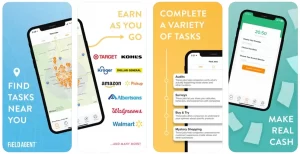A blockchain is a type of Digital Ledger Technology (DLT) that consists of an ever-growing list of records known as blocks that are securely linked together using cryptography. Each block contains the previous block’s cryptographic hash, a timestamp, and transaction data (generally represented as a Merkle tree, where data nodes are represented by leafs).
The timestamp demonstrates that the transaction data was present when the block was created. Because each block contains information about the one before it, they form a chain (compare linked list data structure), with each additional block linking to the ones before it. As a result, blockchain transactions are irreversible in the sense that the data in any given block cannot be changed retroactively without affecting all subsequent blocks.
A peer-to-peer (P2P) computer network typically manages blockchains for use as a public distributed ledger, with nodes collectively adhering to a consensus algorithm protocol to add and validate new transaction blocks. Although blockchain records are not unalterable, due to the possibility of blockchain forks, blockchains may be considered secure by design and exemplify a distributed computing system with high Byzantine fault tolerance.
Based on previous work by Stuart Haber, W. Scott Stornetta, and Dave Bayer, a blockchain was created in 2008 by a person (or group of people) using the name (or pseudonym) Satoshi Nakamoto to serve as the public distributed ledger for bitcoin cryptocurrency transactions.
Satoshi Nakamoto’s identity is still unknown to this day. Because of the blockchain implementation within bitcoin, it was the first digital currency to solve the double-spending problem without the need for a trusted authority or central server. The bitcoin design has inspired other public-readable applications and blockchains that are widely used by cryptocurrencies. The blockchain can be thought of as a type of payment rail.
Why Is Blockchain Important?
Blockchain is a particularly promising and revolutionary technology because it reduces security risks, eliminates fraud, and increases transparency in a scalable manner.
Blockchain technology has since evolved to become a management solution for all types of global industries, thanks to its association with cryptocurrency and NFTs. Today, blockchain technology is used to provide transparency for the food supply chain, secure healthcare data, innovate gaming, and change how we handle data and ownership on a large scale.
What are some advantages of blockchains?
- They’re global: This means that cryptocurrencies can be sent quickly and cheaply around the world.
- They’re open: Anyone can scrutinize cryptocurrency networks because every single transaction is published publicly in the form of the blockchain. That leaves no room for transaction manipulation, changing the money supply, or changing the rules in the middle of the game. The software at the heart of these currencies is free and open-source, allowing anyone to examine the code.
- They increase privacy: Because cryptocurrency payments do not require you to include your personal information, you are less likely to be hacked or have your identity stolen.
How does a blockchain work?
Consider a chain similar to that used for a ship’s anchor. In this case, however, each link in the chain is a chunk of information containing transaction data. You can see what happened today at the top of the chain, and as you move down the chain, you can see older and older transactions. And what happens if you follow it all the way down to the anchor at the bottom of the harbor?
You’ll have seen every single transaction in that cryptocurrency’s history. As a result, the blockchain has significant security advantages: it is an open, transparent record of a cryptocurrency’s entire history.
The link will break if someone tries to manipulate a transaction, and the entire network will be able to see what happened. That sums up a brief explanation of blockchain.
Another common way to describe the blockchain is as a ledger.
(You may also hear the terms ‘distributed ledger’ or ‘immutable ledger’), which is similar to a bank’s balance sheet. The blockchain, like a bank’s ledger, tracks all money flowing into, out of, and through the network.
What Is a Miner in Blockchain?
Miners use the mining process to add new blocks to the chain.
Every block in a blockchain has its own unique nonce and hash, but it also refers to the hash of the previous block in the chain, making mining a block difficult, especially on large chains.
Miners use specialized software to solve the incredibly complex math problem of generating an accepted hash. Because the nonce is only 32 bits long and the hash is 256 bits long, there are approximately four billion nonce-hash combinations that must be mined before the correct one is found. Miners are said to have discovered the “golden nonce” when this occurs, and their block is added to the chain.
Making changes to any block earlier in the chain necessitates re-mining not only the affected block, but all subsequent blocks as well. This is why manipulating blockchain technology is so difficult. Consider it “safety in math,” because finding “golden nonces” takes an enormous amount of time and computing power.
When a block is successfully mined, the change is accepted by all network nodes, and the miner is financially rewarded.
What Is Decentralization in Blockchain?

Decentralization is an important concept in blockchain technology. The chain cannot be owned by a single computer or organization. Instead, it is a distributed ledger through the chain’s nodes. Blockchain nodes are any electronic devices that keep copies of the chain and keep the network running.
Every node has its own copy of the blockchain, and for the chain to be updated, trusted, and verified, the network must algorithmically approve any newly mined block. Due to the transparency of blockchains, every action in the ledger can be easily checked and viewed, resulting in inherent blockchain security. Each participant is assigned a unique alphanumeric identification number, which is used to track their transactions.
Combining public information with a system of checks and balances aids the blockchain’s integrity and fosters user trust. Blockchains are essentially the scalability of trust through technology.
The Blockchain Evolution
Satoshi Nakamoto, a pseudonym for a person or group, publishes “Bitcoin: A Peer to Peer Electronic Cash System.”
The first successful Bitcoin (BTC) transaction occurs between computer scientist Hal Finney and the mysterious Satoshi Nakamoto.
Florida-based programmer Laszlo Hanycez completes the first ever purchase using Bitcoin — two Papa John’s pizzas. Hanycez transferred 10,000 BTCs, worth about $60 at the time. The market cap of Bitcoin officially exceeds $1 million.
1 BTC = 1 USD, giving the cryptocurrency parity with the US dollar. Electronic Frontier Foundation, Wikileaks and other organizations start accepting Bitcoin as donations.
Blockchain and cryptocurrency are mentioned in popular television shows like The Good Wife, injecting blockchain into pop culture. Bitcoin Magazine launched by early Bitcoin developer Vitalik Buterin.
BTC market cap surpassed $1 billion. Bitcoin reached $100/BTC for the first time. Buterin publishes the “Ethereum Project” paper, suggesting that blockchain has other possibilities besides Bitcoin (like smart contracts).
Companies Zynga, The D Las Vegas Hotel and Overstock.com all start accepting Bitcoin as payment. Buterin’s Ethereum Project is crowdfunded via an Initial Coin Offering (ICO) raising over $18 million in BTC and opening up new avenues for blockchain.
R3, a group of over 200 blockchain firms, is formed to discover new ways blockchain can be implemented in technology. PayPal announces Bitcoin integration. The first-known NFT is minted
Number of merchants accepting BTC exceeds 100,000. NASDAQ and San-Francisco blockchain company Chain team up to test the technology for trading shares in private companies.
Tech giant IBM announces a blockchain strategy for cloud-based business solutions. The government of Japan recognizes the legitimacy of blockchain and cryptocurrencies.
Bitcoin reaches $1,000/BTC for the first time. Cryptocurrency market cap reaches $150 billion. JP Morgan CEO Jamie Dimon says he believes in blockchain as a future technology, giving the ledger system a vote-of-confidence from Wall Street. Bitcoin reaches its all-time high at $19,783.21/BTC. Dubai announces its government will be blockchain-powered by 2020.
Facebook commits to starting a blockchain group and also hints at the possibility of creating its own cryptocurrency. IBM develops a blockchain-based banking platform with large banks like Citi and Barclays signing on.
China’s President Ji Xinping publicly embraces blockchain as China’s central bank announces it is working on its own cryptocurrency. Twitter & Square CEO Jack Dorsey announces that Square will be hiring blockchain engineers to work on the company’s future crypto plans. The New York Stock Exchange (NYSE) announces the creation of Bakkt – a digital wallet company that includes crypto trading.
BTC almost reaches $30,000 by the end of 2020. PayPal announces it will allow users to buy, sell and hold cryptocurrencies. The Bahamas becomes the world’s first country to launch its central bank digital currency, fittingly known as the “Sand Dollar.” Blockchain becomes a key player in the fight against COVID-19, mainly for securely storing medical research data and patient information.
Bitcoin surpasses $1 trillion in market value for the first time. Popularity for the implementation of Web3 rises. El Salvador becomes first nation to adopt Bitcoin as legal tender. Tesla buys $1.5 billion in BTC, becoming the first car manufacturer to accept Bitcoin as a form of automobile payment. The metaverse, a virtual environment incorporating blockchain technology, garners mainstream attention.
Cryptocurrency loses $2 trillion in market value, due to economic inflation and rising interest rates. Google launches a dedicated Digital Assets Team to provide customer support on blockchain-based platforms. The U.K. government proposes safeguards for stablecoin holders. Popular video game Minecraft bans blockchain technologies and NFT use in its game.
What Is a Blockchain Platform?
A blockchain network is the distributed ledger infrastructure, whereas a blockchain platform is a medium through which users can interact with a blockchain and its network. Blockchain platforms are designed to be scalable and to function as extensions to existing blockchain infrastructure, allowing information exchange and services to be powered directly by this framework.
Ethereum, a software platform that houses the Etherium, or ether, cryptocurrency, is an example of a blockchain platform. Users can also create programmable tokens and smart contracts on the Ethereum platform, which are built directly on the Ethereum blockchain infrastructure.
What Exactly Is a Blockchain Wallet and How Does It Work?
Cryptocurrencies such as Bitcoin and Ethereum are gaining popularity due to their numerous advantages over traditional fiat currencies. You’ll need to understand how blockchain wallets work if you want to use any of these blockchain-based cryptocurrencies.

What is a Blockchain Wallet?
A blockchain wallet is a type of cryptocurrency wallet that allows users to manage various types of cryptocurrencies, such as Bitcoin or Ethereum. A blockchain wallet facilitates the exchange of funds. Because transactions are cryptographically signed, they are secure.
The wallet is accessible from web devices, including mobile devices, and the user’s privacy and identity are protected. As a result, a blockchain wallet includes all of the features required for safe and secure fund transfers and exchanges between different parties.
It is very similar to sending or receiving money through PayPal or any other current payment gateway, but you use cryptocurrency instead. Electrum, Blockchain.info, Jaxx, Mycelium, Samurai, and Bitcoin paper wallet are some examples of blockchain wallets. There are many more depending on your needs and the level of security you require.
How Do Blockchain Wallets Work?
First, let’s define private and public keys and how they relate to a blockchain wallet. When you create a blockchain wallet, you are given a private key and a public key that you can use to access your wallet. As an example, consider email. You give someone your email address if you want to receive emails from them.
However, giving out your email address does not imply that someone will be able to send emails from your account. To do so, someone would need to know your email account’s password. Blockchain wallets use a similar process that combines a public key and a private key. A public key is similar to an email address in that it can be given to anyone. When you create your wallet, a public key is generated, which you can share with anyone to receive funds.
The private key is a closely guarded secret. It is similar to your password in that it should not be hacked and should not be disclosed to anyone. You spend your money using this private key. If someone gains access to your private key, there is a good chance that your account will be compromised, and you will lose all of your cryptocurrency deposits.
Blockchain Wallet Features
Now that you understand how Blockchain wallets work, it is essential that you know their features. Here are some of the most important characteristics of Blockchain wallets:
- Easy to use. It’s just like any other software or a wallet that you use for your day-to-day transactions.
- Highly secure. It is just a matter of securing your private key.
- Allows instant transactions across geographies. And these are barrier-free, without intermediaries.
- Low transaction fees. The cost of transferring funds is much lower than with traditional banks.
- Allows transactions across multiple cryptocurrencies. This helps you do easy currency conversions.
Types of Blockchain Wallets
Based on private keys, there are two types of blockchain wallets: hot wallets and cold wallets. Hot wallets are similar to the wallets we carry for day-to-day transactions, and they are user-friendly. Cold wallets are similar to vaults in that they securely store cryptocurrencies.
Hot Wallets and Cold Wallets
Hot wallets are online wallets that allow for the quick transfer of cryptocurrencies. They are available on the internet. Coinbase and Blockchain.info are two examples. Cold wallets are digital offline wallets that sign transactions offline and then disclose them online. They are not kept in the cloud on the internet; instead, they are kept offline for maximum security. Trezor and Ledger are two examples of cold wallets.
Private keys are stored in the cloud with hot wallets for faster transfer. Private keys are stored in cold wallets on separate hardware that is not connected to the internet or the cloud, or on a paper document.
Hot wallets are available online 24 hours a day, seven days a week and can be accessed via a desktop or mobile device, but there is a risk of unrecoverable theft if hacked. The method of transaction used with cold wallets aids in protecting the wallet from unauthorized access (hacking and other online vulnerabilities).
Wallets are further classified into three types:
- Wallets for software;
- Hardware wallets that plug into a USB drive; and
- Typical paper-based wallets, in which you print your public and private keys on a piece of paper and store them safely.
Software Wallets
A software wallet is an application that is downloaded onto a device; it could be a desktop or mobile device, or it could be a web-based wallet that is accessible online. Popular software wallets include Breadwallet, Jaxx, and Copay. Software wallets are further classified as desktop wallets, online wallets (web wallets), and mobile wallets.
Desktop Wallets
Desktop wallets are cold wallets, which store private keys on cold servers (in your desktop). You can disconnect the wallet from the Internet, conduct some offline transactions, and then reconnect it. If the primary server fails, a cold server, essentially your desktop, is used as a backup server.
These wallets can be downloaded on any computer but can only be accessed from the system on which they are installed, so make sure the desktop or machine on which you are downloading the desktop wallet is safe (has a backup and is in a secure location) and that you are maintaining the hardware and not allowing the machine to go anywhere. These wallets are unquestionably cost-effective. One of the most popular desktop wallets is Electrum.
Online Wallets
These are other types of Internet-based hot wallets. Users have the advantage of being able to access their wallets from any device. It could be a tablet or a desktop, or it could be accessed through a mobile browser. The private keys are managed by a third party and stored online. GreenAddress, for example, is a Bitcoin wallet that is accessible via the web, has an Android app, is accessible via a desktop, and is also accessible via iOS.
Mobile Wallets
Mobile wallets are similar to online wallets in that they are only designed for use and accessibility on mobile phones. These wallets have an easy-to-use interface that allows you to conduct transactions quickly. Mycelium is the best mobile wallet available.
Hardware Wallets
A hardware wallet is a type of cold storage device that stores the user’s private key in a secure hardware device, similar to a USB. These wallets resemble portable devices that can be linked to a computer (plugged in). As previously stated, they are less vulnerable to malicious attacks and are hack-proof. The top hardware wallets on the market are Ledger, Trezor, and KeepKey.
To make a transaction from your hardware wallet, make sure it is plugged into your computer system.
Paper Wallets
A paper wallet is a method of storing cryptocurrencies that is done offline. This wallet is a printed piece of paper that contains both your private and public keys, which can be accessed via a QR code. Because these wallets are secure, they are commonly used to store large amounts of cryptocurrencies. Two popular paper wallets are Bitcoin Paper Wallet and MyEtherWallet.
A paper wallet is used in conjunction with your software wallet to transfer funds from your software wallet to the public address displayed on your paper wallet. You park your funds in a software wallet first, and then transfer the funds from the software wallet to the public address printed on the paper wallet.




























